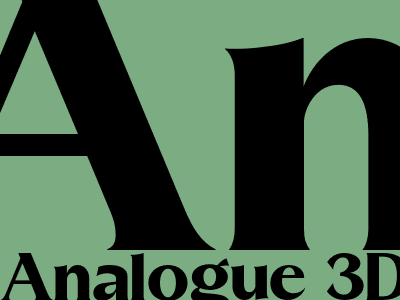
Comprehensive Guide to Analogue 3D: Immersive, Engaging, and Nostalgic
What is Analogue 3D?
Analogue 3D, also known as lenticular printing, is a display technology that produces 3D images without the need for special glasses or equipment.
It works by creating an array of vertically aligned lenses on a flat surface. When an image is projected onto the lenses, each viewer sees a slightly different perspective of the image, creating the illusion of depth and movement.
How does Analogue 3D compare to Digital 3D?
Analogue and digital 3D technologies share the ability to create immersive and engaging experiences, but they also have distinct advantages and disadvantages:
Analogue 3D Advantages:
- No special glasses required
- Suitable for various displays (e.g., posters, postcards, product packaging)
- Nostalgic and retro appeal
In recent years, analogue 3D has made a resurgence as a unique and attention-grabbing medium in advertising, packaging, and entertainment.
Digital 3D Advantages:
- Higher resolution and detail
- More advanced visual effects
- Interactivity and wearable technology integration
Applications of Analogue 3D:
Analogue 3D offers versatility and visual impact, making it applicable in various fields:
Advertising and Marketing:
Analogue 3D can create captivating posters, billboards, and product packaging that stands out and attracts attention.
Entertainment:
Lenticular printing is commonly used in creating 3D postcards, greeting cards, and book covers, providing an interactive and memorable experience.
Security and Authentication:
Analogue 3D can enhance security features on documents and objects, making them more difficult to counterfeit.
Education:
Analogue 3D can be used to create educational materials, such as interactive textbooks and learning aids, making concepts more engaging and accessible.
Challenges and Future of Analogue 3D:
While analogue 3D offers unique advantages, it also faces challenges and considerations:
Viewing Limitations:
Analogue 3D images require the viewer to be within a specific distance and angle to experience the 3D effect, limiting accessibility for some viewers.
Resolution and Image Quality:
Compared to digital 3D, analogue 3D has lower resolution and image quality, potentially affecting the visual fidelity of complex images.
Cost and Production:
The production process for analogue 3D is more complex than traditional printing, which can impact the cost and feasibility of large-scale applications.
The future of analogue 3D lies in exploring new materials and technologies to improve resolution, expand viewing angles, and reduce production costs. Additionally, the integration of augmented reality (AR) and other digital enhancements could further enhance the interactive capabilities of analogue 3D.